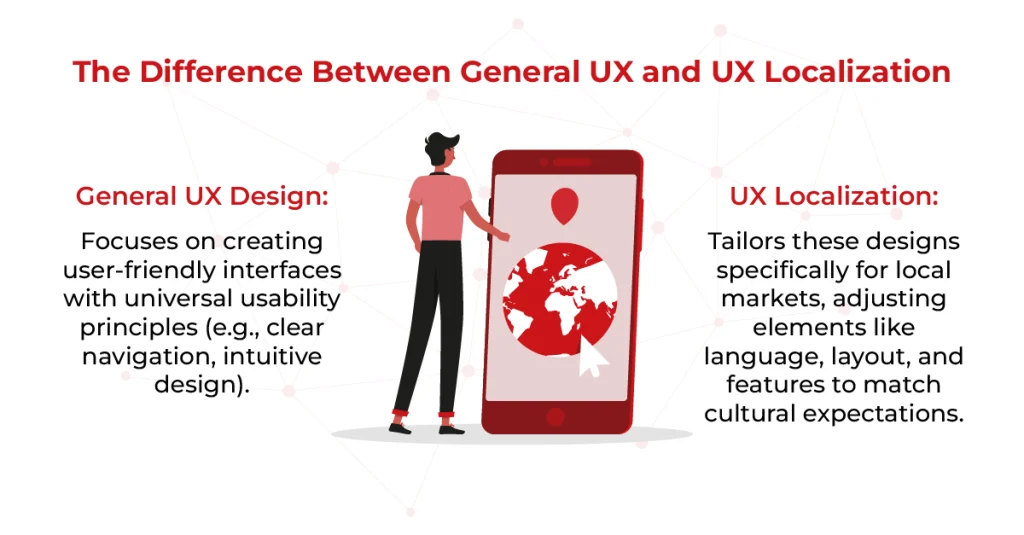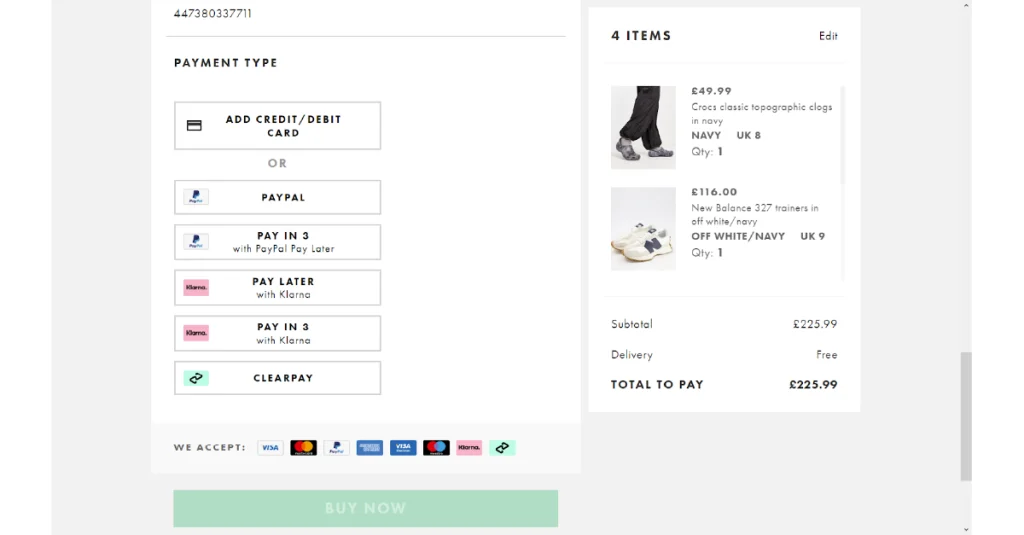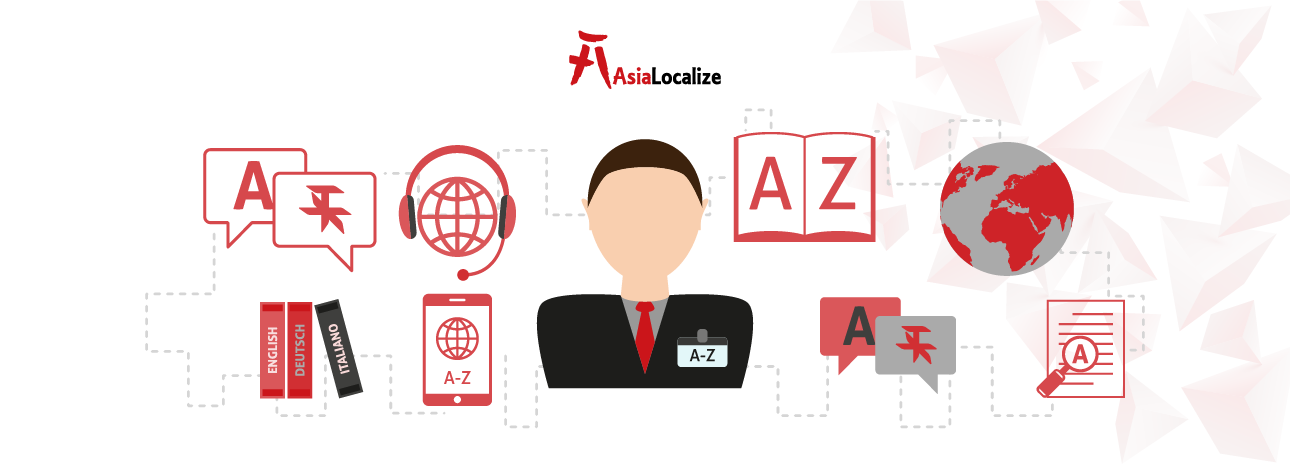Did you know that 65% of consumers prefer content available in their native language, even if it’s less polished? Or that 64% of buyers prioritize localized content above all else? These striking stats reveal a universal truth: your global audience craves familiarity and values the effort behind localization.
Today’s users seek more than a sleek app or a stunning interface—they want a localized user experience that feels tailor-made, resonating deeply with their cultural preferences and personal tastes. In this blog, we’ll explore how to craft multilingual user experiences that captivate, connect, and convert across borders.
Understanding the Basics of UX Localization
What is UX Localization?
UX localization is the process of adapting user interfaces (UI) and overall user experiences to suit the cultural, linguistic, and regional preferences of specific audiences. It’s about creating a user experience that feels native and intuitive to local users. Key Elements of UX Localization include:
- Text Translation: Translating content to the local language without losing the original meaning.
- Visual Adaptation: Adjusting design elements like colors, images, and icons to reflect cultural context.
- Navigation Patterns: Modifying how users interact with the interface based on regional preferences.
- Functionality Adjustments: Ensuring that features, buttons, and menus are easy to use for local audiences.
Unlike general UX design, which aims to create user-friendly interfaces for a broad audience, UX localization tailors designs specifically for different regions. It focuses on both cultural adaptation and language-specific design, ensuring that the interface feels natural and intuitive for each target group.
While general UX design prioritizes universal principles like clear navigation and visual hierarchy, UX localization ensures these principles are culturally relevant and linguistically accurate. For example, date formats differ across regions—MM/DD/YYYY in the U.S. vs. DD/MM/YYYY in Europe—so UI elements must be adjusted accordingly.
Languages with right-to-left (RTL) scripts, like Arabic and Hebrew, require even more significant adjustments.
- Flipping navigation menus.
- Adjusting text alignment.
- Reorganizing icons to feel natural for RTL users.
For instance, Netflix adapts its interface for Arabic-speaking users by mirroring the layout and testing for readability to ensure smooth navigation and a seamless user experience.
| Turn Your App into a Local Favorite—Explore Our App Localization Services! |
Building a Seamless Experience for Multilingual Users
Creating a seamless experience for multilingual users requires thoughtful adaptation of interfaces, content, and functionality to align with diverse cultural and linguistic expectations.
Adapting UI for Local Audiences
Effective UX localization tailors user interfaces to accommodate linguistic and cultural norms, ensuring intuitive navigation and accessibility. This includes adjusting layouts for language-specific requirements, such as expanding text fields for languages like German, which often have longer words, or flipping interfaces for right-to-left (RTL) scripts like Arabic.
Cultural Adaptation in UX
Cultural nuances shape how users perceive visuals, icons, and symbols, and localization ensures these elements align with local expectations. Taking into account the cultural preferences in UX design means selecting imagery and colors that resonate—e.g., using red for prosperity in China but avoiding it for alerts in Western markets—and avoiding potentially offensive or confusing symbols.
For instance, a “thumbs-up” icon may signify approval in the US but be offensive in parts of the Middle East.
Localized Content for User Engagement
Engaging multilingual users requires translating and adapting content like CTAs, error messages, and instructions to reflect local language and tone while preserving brand voice. Literal translations often fall flat, so localization focuses on cultural relevance—e.g., adapting a playful CTA like “Let’s Go!” to a more formal tone in Japan.
Spotify, for instance, localizes its playlist descriptions to include region-specific music references, boosting user connection.
Regional Usability Testing
Conducting usability testing in target markets is imperative to identify region-specific issues that could disrupt the user experience. This involves observing local users as they interact with the app to uncover cultural misalignments, confusing navigation, or translation errors.
Mobile App Localized UX
Mobile apps demand special attention to localized UX, as user behavior and preferences vary widely across regions. This includes optimizing for local device usage patterns, such as ensuring compatibility with popular low-bandwidth networks in emerging markets or tailoring features to cultural habits, like integrating QR code payments for Chinese users.
Proven Strategies for Website, Mobile App, and eCommerce UX Localization
Delivering a seamless, culturally resonant user experience across websites, mobile apps, and eCommerce platforms requires strategic localization that goes beyond translation.
Website Localization for Better User Experience
Website localization adapts design, content, and functionality to create intuitive, market-specific experiences. This includes adjusting navigation, visuals, and payment systems to align with local expectations.
For example, ASOS localizes its fashion retail website by offering region-specific payment methods (e.g., Klarna in Europe, UPI in India) and displaying prices in local currencies, enhancing accessibility and trust.
Mobile App Localized UX
Mobile app localization requires careful attention to language expansion and cultural adaptation to maintain usability across diverse markets. Languages like German or Russian often require more space due to longer words, so UI elements like buttons and menus must be designed to accommodate text expansion without breaking layouts.
Shopify, for instance, adapts its app for Japanese users by using compact, culturally relevant visuals and adjusting layouts to support vertical text preferences.
| Localized apps see up to 30% higher retention rates! |
eCommerce UX Localization
E-commerce platforms thrive when checkout processes, product displays, and recommendations are tailored to local norms. This includes supporting local payment methods (e.g., Alipay in China, Boleto in Brazil) and formatting taxes or shipping details to match regional standards.
Amazon excels here, localizing its platform with currency-specific pricing, translated product descriptions, and regionally relevant recommendations—such as promoting monsoon gear in India during rainy seasons.
| eCommerce localization can increase search traffic by 47%, boost website visits by 70%, and increase conversion rates by 20%. |
UX Tools for Localization
Using the right tools can simplify the localization process, improve accuracy, and speed up delivery—especially when working across multiple markets.
- Figma: Ideal for collaborative design, Figma allows teams to prototype, iterate, and test localized UI layouts. It’s especially helpful when adapting for right-to-left (RTL) languages like Arabic or accommodating languages with longer word lengths, such as German.
- Gridly: A powerful translation management system that centralizes content, automates workflows, and ensures consistency across multilingual websites and applications.
These tools not only improve efficiency but also help teams maintain high-quality, culturally accurate user experiences across regions.
| Go Global, Stay User-Friendly—Learn More About Our Software Localization Process! |
Pitfalls That Can Derail Your Localization Efforts
Localization is a powerful tool for global success, but missteps can undermine user satisfaction and brand trust.
Ignoring Cultural Nuances
Failing to account for cultural differences can lead to embarrassing or offensive errors that alienate users. A classic example is Pepsi’s 1960s slogan, “Come alive with the Pepsi Generation,” mistranslated in China as “Pepsi brings your ancestors back from the grave,” causing confusion and ridicule. Such blunders stem from overlooking cultural context, idioms, or taboos.
Overlooking Non-Text Elements
Localization extends beyond text to include visuals, icons, and promotional imagery, which carry significant cultural weight. Neglecting to adapt these elements can confuse or offend users.
Hardcoding Strings
Hardcoding text strings in software code complicates localization, as it requires developers to manually extract and replace text for each language, increasing costs and errors.
Skipping Regional Usability Testing
Failing to conduct regional usability testing can result in interfaces that frustrate or confuse users, leading to poor engagement. Testing with local users uncovers issues like awkward translations, misaligned layouts (e.g., RTL for Arabic), or culturally irrelevant features.
Tracking the Impact of Localized User Experience
Measuring the effectiveness of UX localization ensures that your website, app, or platform resonates with diverse audiences, drives engagement, and maximizes conversions.
Data Analytics for Localized User Behavior
Leveraging data analytics is essential to evaluate how localized versions of your platform perform. Key metrics like conversion rates, bounce rates, and time-on-site reveal user engagement and satisfaction in specific markets.
Customer Feedback
Gathering user reviews, surveys, and direct feedback provides qualitative insights into how localized UX is perceived. This helps identify pain points, cultural missteps, or feature requests specific to a market.
Regional Usability Testing
Conducting regional usability testing with tools like heatmaps and A/B testing uncovers how users interact with localized interfaces, highlighting what works and what doesn’t. Heatmaps, via tools like Hotjar, show where users click or linger, revealing if a localized CTA button in Japan is overlooked due to placement.
AI-Driven UX Localization
AI tools enhance localization by analyzing user behavior in real time and suggesting data-driven refinements. Platforms like Contentsquare or Smartling use AI to track engagement patterns, such as identifying that German users abandon forms with overly concise translations.
These tools also recommend culturally appropriate design tweaks, like adjusting color schemes for Chinese users to align with festive preferences.
Mastering localized user experience is no longer a luxury—it’s a strategic imperative for brands aiming to thrive in a globalized world. By thoughtfully adapting interfaces, content, and functionality to align with cultural and linguistic nuances, businesses can forge deeper connections, boost engagement, and drive conversions across diverse markets.
At AsiaLocalize, we can help you effortlessly tap into the market of your desire and connect with them in the way they deserve.
| Make Your App or Website a Global Favorite Contact Us Now! |








